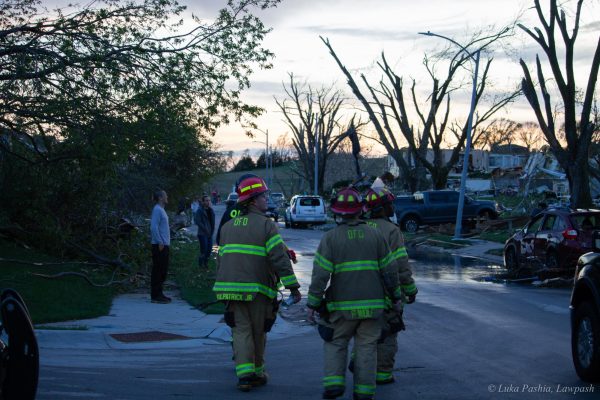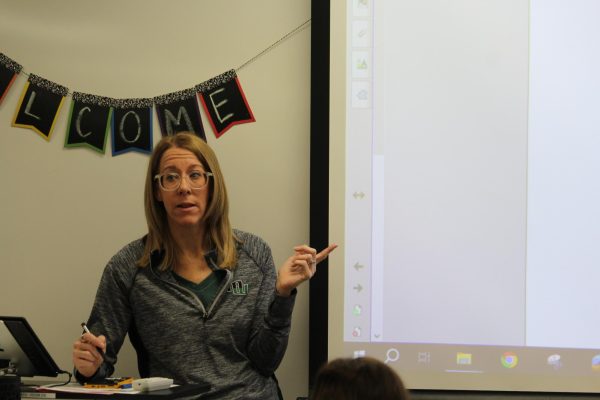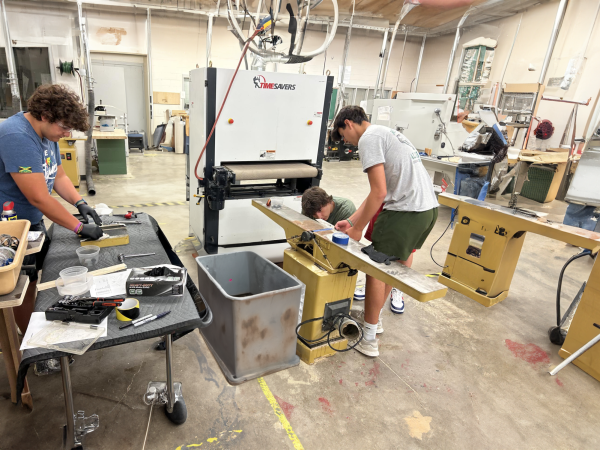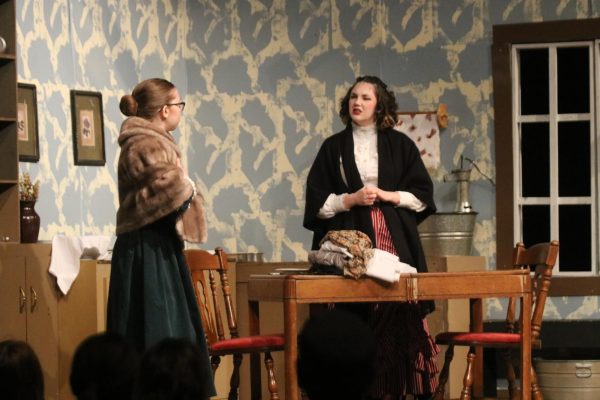Pushing the property tax
Millard asks community for a continuation of their levy override
Senior Carson Ballard spends time in the library, a program partially funded by the levy. For both students and staff, maintaining the schools programs is of upmost importance. “I really hope the levy goes through,” Ballard said. “Even though I’m leaving, there are many resources I don’t want our school to loose.”
March 3, 2023
YES or NO.
The decision to either mark yes or no on the next ballot will alter the opportunities for thousands of students in the Millard Public Schools District.
In March, voters in the Millard Public Schools District will decide whether to renew for another five years the levy override they approved in 2017.
Millard’s levy override aims to protect and equalize the district’s budget and expenditures through the use of a voter approved property tax. In order to prioritize staff funding, student resources, and curriculum, Millard’s asking their community for up to an additional nine cents in order to stabilize their budget.
“Without a levy override we simply cannot generate the revenue to support or sustain our programs,” Superintendent Dr. John Schwartz said. “ However, it’s not a function of spending. We don’t need this because we over spend; we need this because of variables that are outside of our control, such as student enrollment, percentage of students in poverty, percentage of students in EL programs, etc.”
For Millard, 80% of money spent goes towards the people who serve in their schools- from food service staff, to teachers and administrators. Any person that’s serving students or helping maintain facilities are considered the biggest expense. With the levy, the district aims to keep and support its staff.
“For our teachers and staff members, our main goal is to stabilize,” Schwartz said. “We don’t want to take away or add, we just want to keep what we have.”
In the classroom, the losses of the levy not passing would be apparent. From cutting programs, to unfilled teaching and staffing positions, Millard would need to start the first stages of their selective abandonment process.
“It was hard for me as an educator,” Schwartz said. “You almost always feel like there’s more that you wish you had, programs you wish you could offer, classes you could make smaller. There’s always more that we can do to serve kids, so when the conversations about taking things away it’s really really hard because these things make such a big difference for you.”
It was only just a few years ago, Millard cut over 4.5 million dollars worth of programs between 2016-2019, affecting both students and teachers.
“Last time those cuts cut pretty close to home,” principal Dr. Greg Tiemann said. “At first the cuts started away from the classroom, then they worked their way into personnel, slowly affecting our students. Then it wasn’t long before we started considering cutting some of the career academies, as well as some of the different world language levels.”
For the board of education, their top priority now is providing information for everyone in the Millard community, especially the 60% of Millard residents who don’t have a student in the Millard Public Schools District. In order to increase involvement and engagement the board has hosted several informative meetings open to everyone in the community.
“Our personal goal was to be upfront and honest with our community,” Chief Financial Officer Chad Meisgeier said. “One of the local taxpayer advocacy groups, Nebraska Taxpayers For Freedom, advocates against higher property taxes. So one of the things we did in this process was meet with them individually and went through our goals and statistics. And after reviewing our outcomes in terms of how students are doing and our finances the outcome was unanimous- vote in favor of the levy.”
For the most recent levy in 2017 the outcome stood- 63% in support and 37% not in support. And with the election approaching in March, it’s vital Millard’s community members stay informed and acknowledge the effectiveness of the levy in our schools. For now, the Millard Board of Education continues to bring awareness towards the topic and push the levy across the finish line.

















